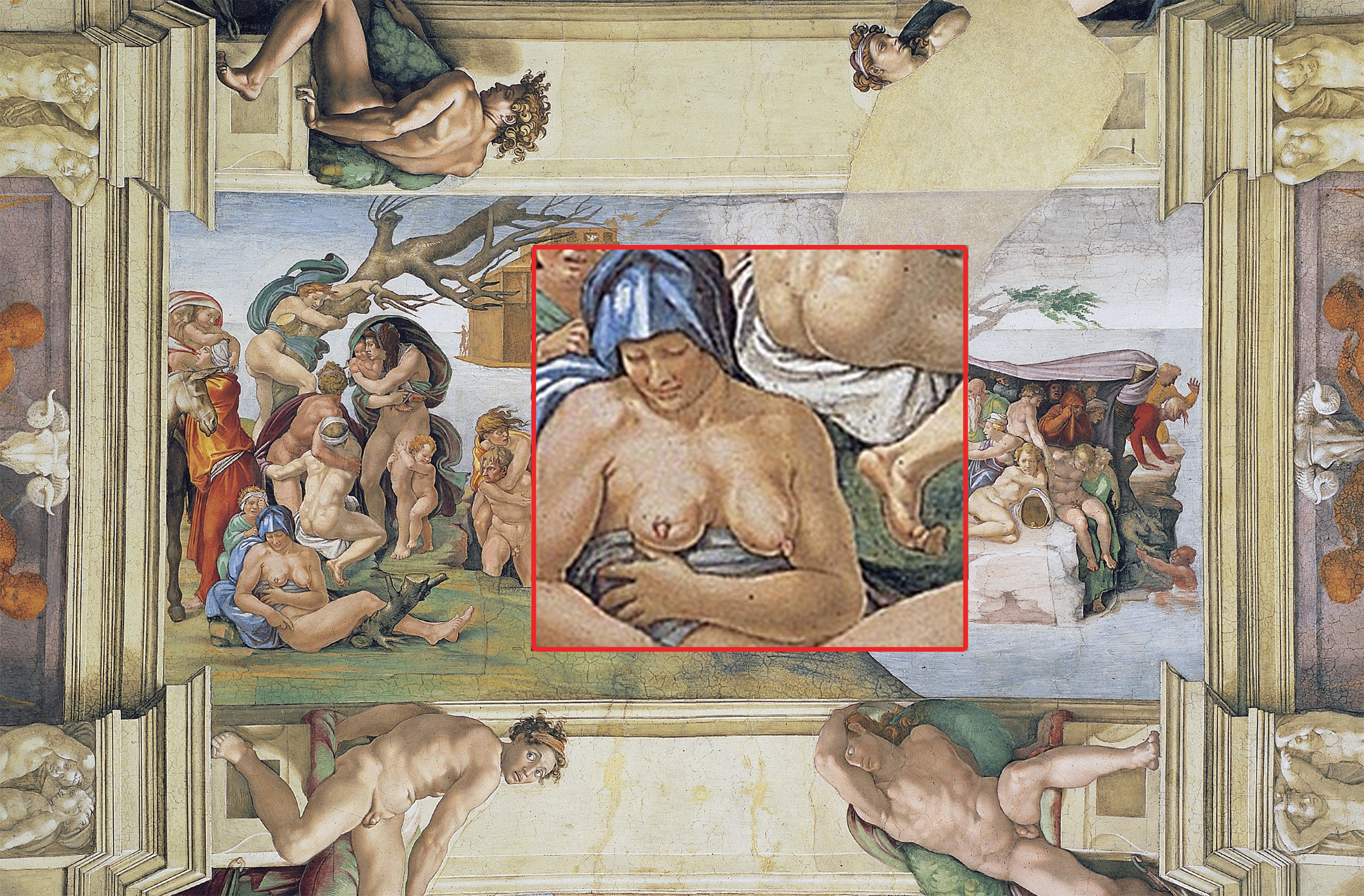A new research paper suggests that Michelangelo depicted a woman afflicted with breast cancer in the composition of his “Deluge/The Flood” (1508–1509) fresco on the second span of the Sistine Chapel’s ceiling.
Led by Raffaella Bianucci of the Université Paris-Saclay, a team of European researchers leaned on existing guidelines for iconodiagnosis — retrospective medical diagnoses for human figures in works of art — and concluded that the appearance of the frescoed woman’s bare chest “shows features consistent with breast carcinoma,” publishing their findings in the peer-reviewed journal The Breast.
Perhaps easy to overlook as one’s eyes scan Michelangelo’s rendition of the biblical tale from the Book of Genesis, the purported diagnosis comes from a closer inspection of the nearly nude female figure with a draped blue headdress in the bottom right corner of the composition. The researchers zeroed in on the woman’s right breast, identifying two protruding lumps on either side of its upper portion as well as a retracted nipple and defects of the areola.
The researchers compare their observations to those of two other women with exposed breasts from Michelangelo’s frescoed span of “The Last Judgment” on the Sistine Chapel’s altar wall, noting that they appear to be in good health. To the right, a nude woman has breasts that look “firm and symmetrically positioned, with a rounded and youthful appearance” — with asymmetrical nipples being the only benign abnormality of an otherwise “balanced and harmonious” presentation.
Above, the researchers make note of an elderly woman whose sagging chest and downward-pointing nipples are indicators of advanced age and the effects of gravity.
“Despite this, the breasts retain a natural appearance, still within a range of normal aging without pathological signs,” the researchers described. “The overall impression matches the aged features of the person’s face, creating a consistent portrayal of time’s effects on the body.”
While Michelangelo’s anatomical expertise is appropriately acknowledged and contextualized by his examinations of cadavers during his late teenage years, the study also considers commentary surrounding his sculptural handling of the female breast in its analysis.

Referencing the woman from his “Night” (1526–1531) sculpture on the tomb of Giuliano de’ Medici in Florence in particular, many have identified the High Renaissance master’s habit of rendering breasts sitting awkwardly on top of male torsos when depicting nude women. Previous researchers had also retrospectively diagnosed the woman depicted in “Night” as afflicted with breast cancer.
However, the study suggests that Michelangelo’s depiction of the woman in “Deluge/The Flood” with an irregular breast is a symbolic choice. “The representation of a probable breast cancer is linked to the concept of the impermanence of life and has the significance of punishment,” the researchers explained.
“Michelangelo’s individuals are painfully aware of their destiny rather than being petrified by the danger that hovers over them,” they concluded, also identifying that the woman gazes solemnly at her afflicted chest and positions her thumb underneath to lift it into view.

